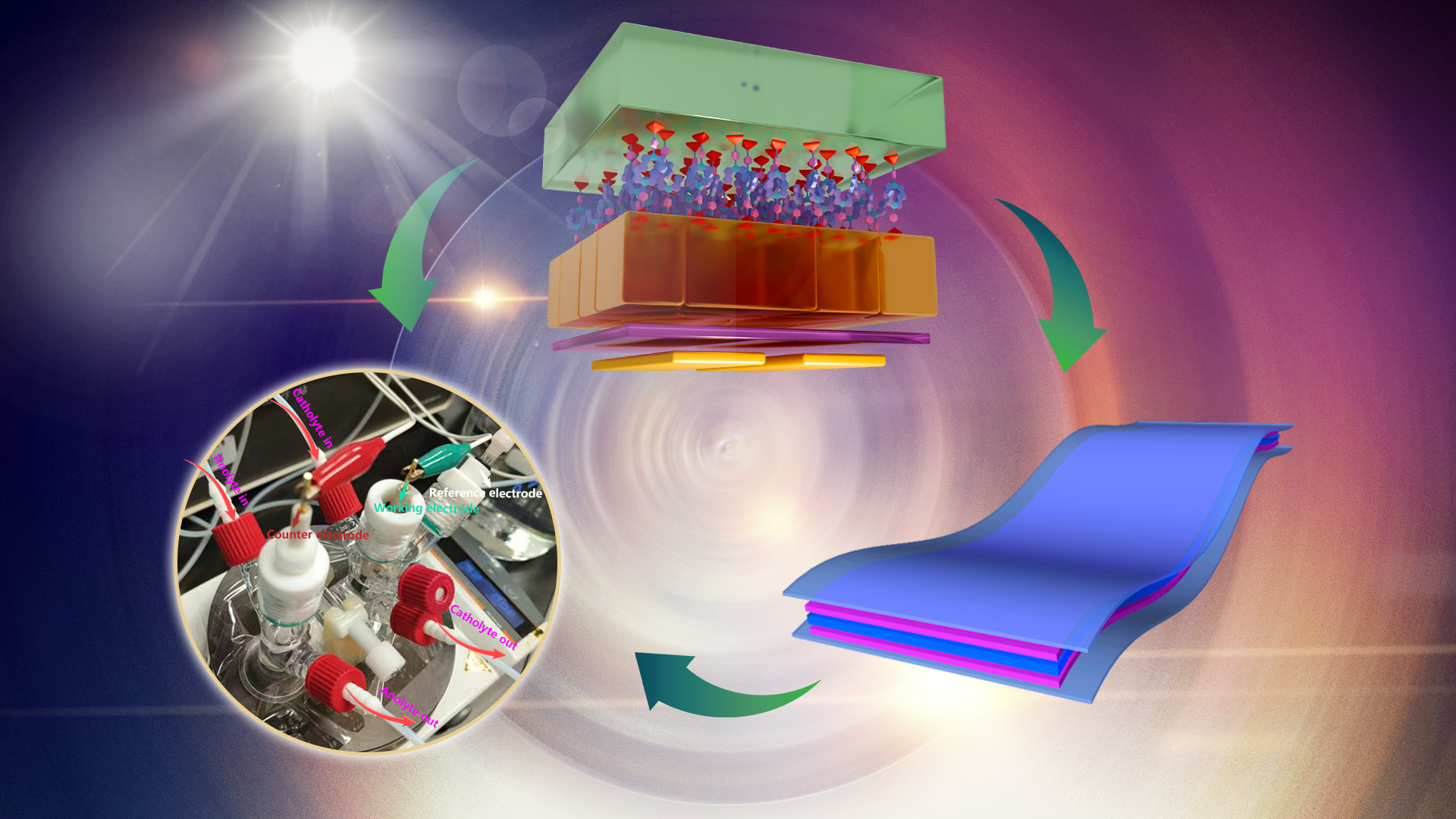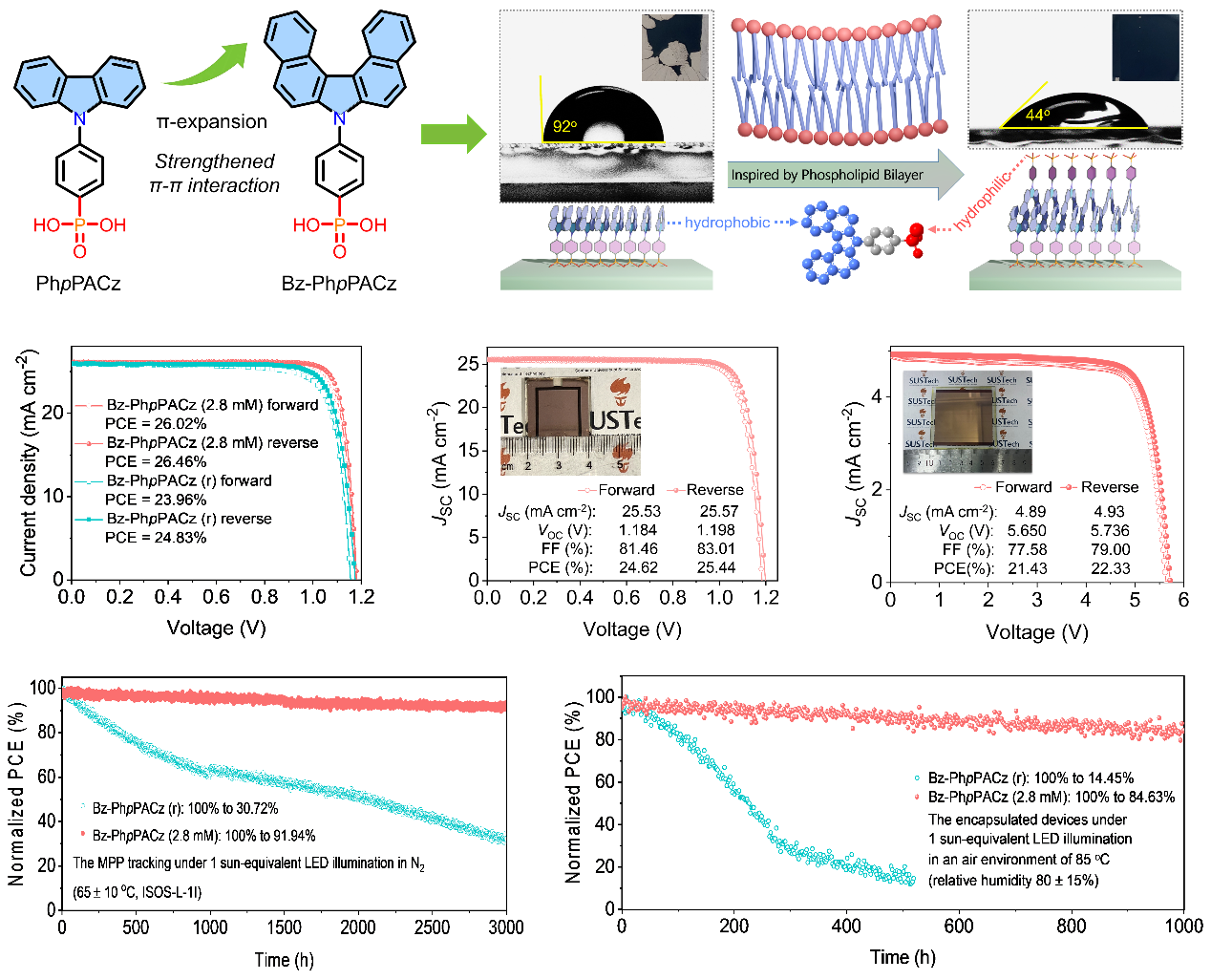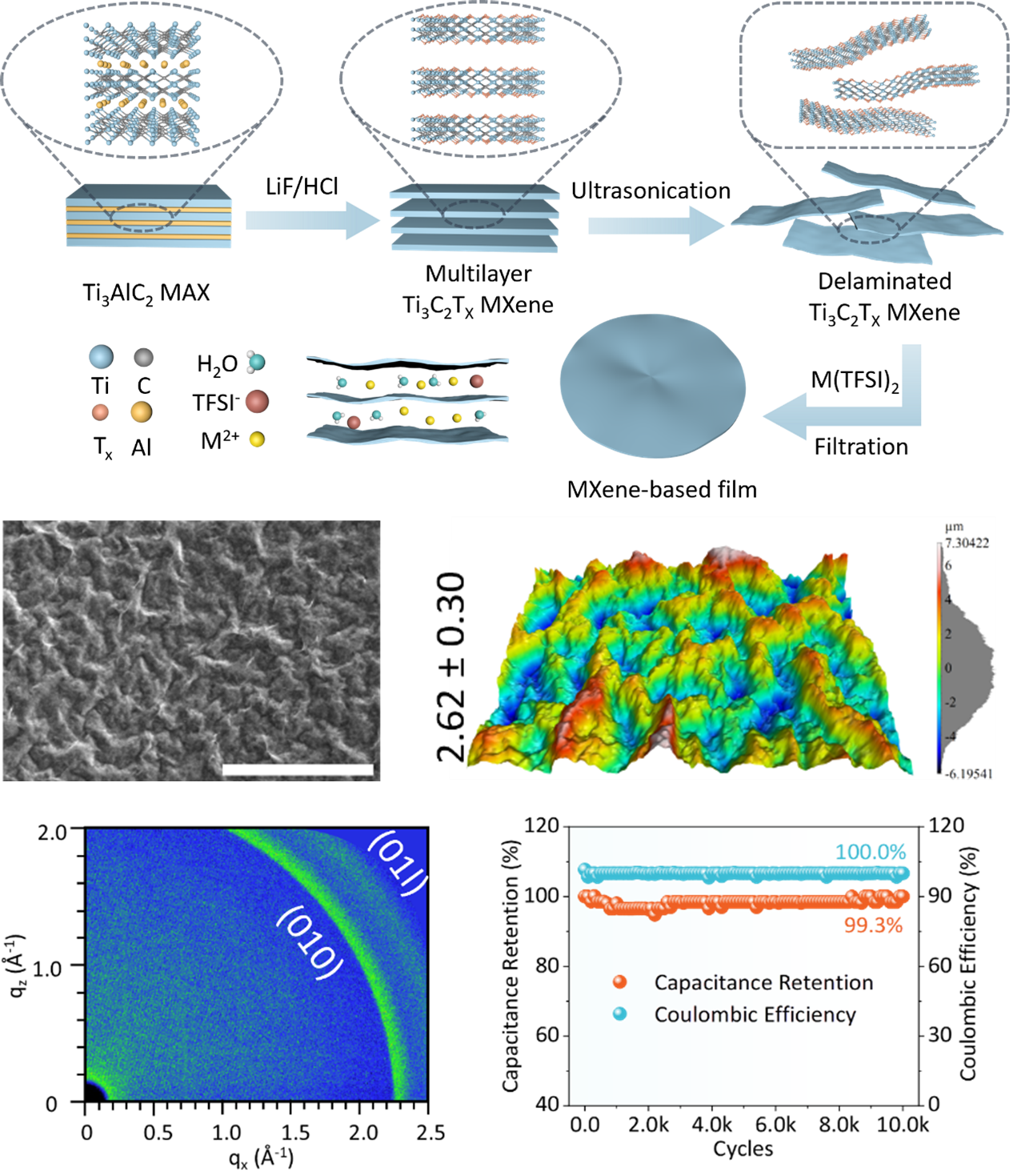Researchers make series of progress in field of new energy
2025-01-23
Under the dual carbon goals, the development of new energy technologies is rapid, with perovskite photovoltaics, supercapacitors, and electrocatalytic ammonia production becoming research hotspots. Perovskite photovoltaic technology has achieved remarkable results in the field of photovoltaics, thanks to its high efficiency, low cost, and excellent light absorption properties.
As a new type of energy storage device, supercapacitors have the advantages of fast charging and discharging, long cycle life, and environmental friendliness, and are widely used in the field of energy storage and conversion. Electrochemical ammonia production technology is a green and sustainable method of ammonia synthesis, which is expected to replace the traditional Haber-Bosch process, providing a clean energy solution for the fertilizer industry. These three new energy technologies are of great significance in improving energy utilization efficiency, reducing environmental pollution, and promoting sustainable development.
Professor Zong-Xiang Xu’s research group from the Department of Chemistry, College of Science at the Southern University of Science and Technology (SUSTech) has recently made a series of research progress in the field of new energy.
They have published three academic papers in renowned journals such as Nature Communications, Applied Catalysis B: Environment and Energy, and Advanced Functional Materials.

Self-assembled materials for perovskite solar cells
The research group designed and developed multiple novel self-assembly (SAM) hole-transport materials in a recent study, effectively improving the efficiency and stability of perovskite photovoltaic devices (Joule 2024, 8, 2123–2134). Further exploration of new SAMs design methods is an important topic in perovskite photovoltaics. While self-assembled material-based inverted perovskite solar cells have surpassed power conversion efficiencies of 26%, enhancing their performance in large-area configurations remains a significant challenge.
In this work, they reported a self-assembled material-based hole-selective layer 4-(7H-dibenzo[c,g] carbazol-7-yl)phenyl)phosphonic acid, with a π-expanded conjugation. The enhanced intermolecular π–π interactions facilitated the self-assembly of 4-(7H-dibenzo[c,g]carbazol-7-yl)phenyl)phosphonic acid (Bz-PhpPACz) molecules to form an ordered bilayer with a hydrophilic surface, which passivated the buried perovskite interface defect and enabled high-quality and large-area perovskite preparation, while simultaneously enhancing interfacial charge extraction and transport. The certified efficiency of 4-(7H-dibenzo[c,g]carbazol-7-yl)phenyl) phosphonic acid based small-area (0.0715 cm2) device was 26.39% with high stability. Furthermore, a certified efficiency of 25.21% was achieved for a 1 cm2 large area device.

This work, entitled “Self-assembled materials with an ordered hydrophilic bilayer for high performance inverted Perovskite solar cells”, has been published in Nature Communications.
Joint Ph.D. students of SUSTech and the Harbin Institute of Technology (HIT) Ge-Ping Qu and Ying Qiao, along with master’s Letian Zhang from SUSTech, are the co-first authors of this paper. The corresponding authors included Professor Alex Jen from the City University of Hong Kong, and Associate Professor Xi-Han Chen and Professor Zong-Xiang Xu from SUSTech.
Catalyst for ammonia synthesis across pH ranges
Electrocatalytic nitrate reduction reaction (NO3–RR) to ammonia is a promising approach for ammonia synthesis under ambient conditions. However, most studies have focused on nitrate reduction using alkaline wastewater, neglecting the large amount of acidic wastewater. Although many catalysts exhibit excellent NO3–RR performance in alkaline environments, they do not perform well in acidic conditions (with ammonia yield rate ≤1 mmol h-1 cm-2) owing to poor stability, strong competition from hydrogen evolution reaction (HER), and inadequate nitrate hydrogenation kinetics in acidic solution.
In this study, the researchers prepared an acidic-stable and HER-inert catalyst based on bimetallic copper-iron phthalocyanine molecules (Cu1Fe3Pc) that exhibits ammonia Faradaic efficiency over 89% and yield rate over 2.4 mmol h-1 cm-2 at all pH conditions. They employed deuterium labelling and operando Fourier-transform infrared spectroscopy to investigate promoted nitrate hydrogenation behaviors on Cu1Fe3Pc. Density functional theory simulations further demonstrated that electrons concentrated near FePc in Cu1Fe3Pc promote nitrate hydrogenation to ammonia in both acidic and alkaline conditions.
This research suggests a material strategy for the practical ammonia electrosynthesis for nitrate waste across a wide pH range.

This work, entitled “Bimetallic Phthalocyanine Catalyst for Ammonia Electrosynthesis from Nitrate Reduction across All pH Ranges”, has been published in Applied Catalysis B: Environment and Energy.
Master’s student Jun-Yuan Feng from SUSTech is the first author of this paper. The corresponding authors included Dr. Qi-Kun Hu, Professor Kian Ping Loh from the National University of Singapore and Professor Zong-Xiang Xu.
Surface texture optimization in MXene electrodes
To make supercapacitors a viable commercial product, it is necessary to increase the mass loading (ML) of the electrodes. However, current research on high ML MXene electrodes mainly focuses on internal structure optimization, often neglecting the importance of surface texture in the electrodes, which plays a crucial role in mediating interactions between the internal structure and the electrolyte.
This study by the research group reported on a simple ion-intercalation process that can reduce charge transfer resistance and improve cycling stability. Through the integration of 3D visualization models and wide-angle X-ray scattering techniques, a comprehensive investigation of the electrode’s surface structure and MXene flake arrangement was conducted. It showed that pre-oriented aggregates induced by ion-intercalation created a sophisticated surface structure with rich hills and valleys, promoting electrolyte permeation and ion exchange. These improvements resulted in electrodes with excellent stability, retaining 99.9% capacitance after 15000 GCD cycles, and the fabricated high ML electrode exhibited remarkable stability and areal capacitance exceeding 5 F cm-2.
This research highlights the significance of surface texture in films and electrodes, guiding the design of high-performance materials.

This work, entitled “Optimizing Surface Texture through Ion Induction for High Areal Capacitance and Enhanced Stability in MXene Electrodes”, has been published in Advanced Functional Materials.
Master’s student Chang-Qin Gao is the first author of this paper, with Professor Zong-Xiang Xu serving as the corresponding author.
Paper links (In order of appearance above):
Nature Communications: https://doi.org/10.1038/s41467-024-55523-0
Applied Catalysis B: Environment and Energy: https://doi.org/10.1016/j.apcatb.2025.125027
Advanced Functional Materials: https://doi.org/10.1002/adfm.202413425




